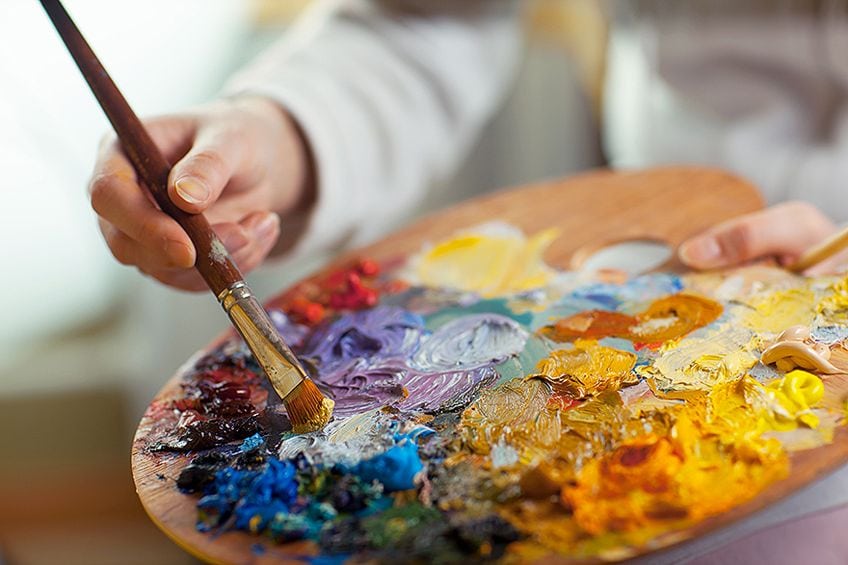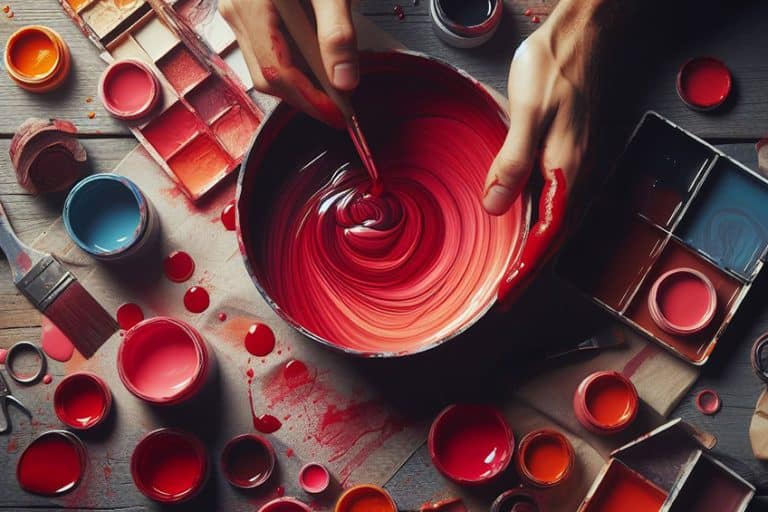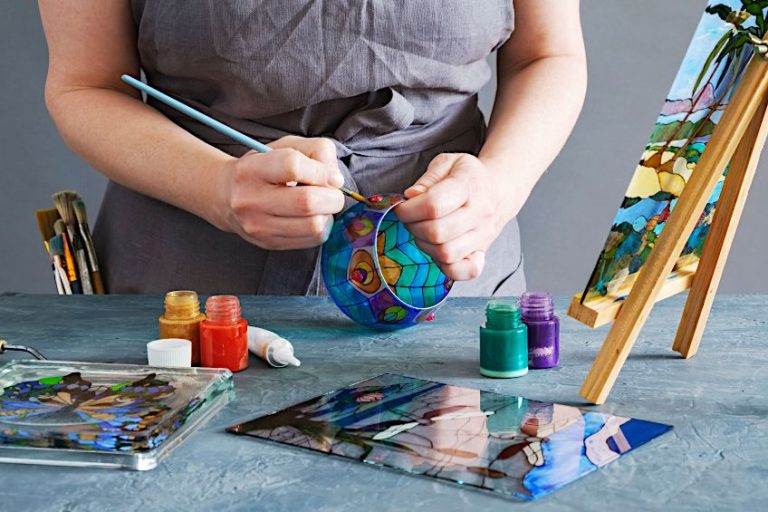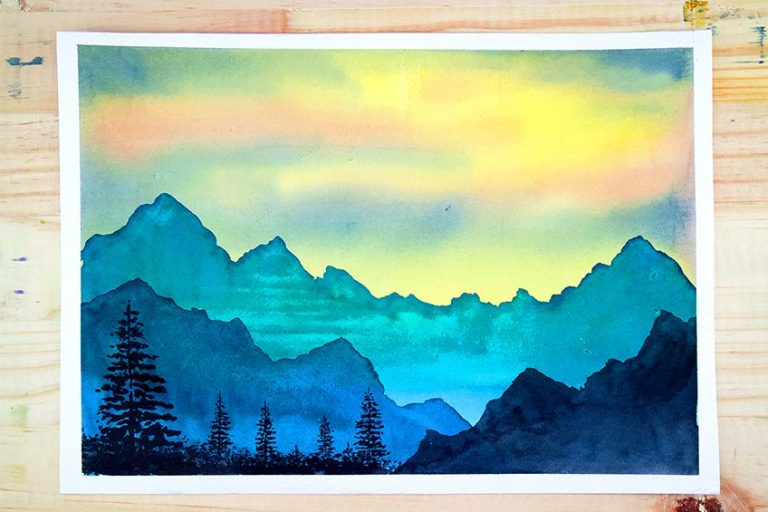How Long Does Oil Paint Take to Dry? – A Guide on Drying Oil Paint
Oil-based paints are notorious for the extremely long time they take to dry. In comparison to other paint types such as acrylics and watercolors, it takes far longer for this newly painted surface to set completely. These paints are, of course, more durable than their water-based counterparts, thanks to their foundational ingredients. Oil-based paints are made from a natural oil such as linseed, or a synthetic oil like alkyd. In the following article, we will cover oil paint drying times and confront the issue of how to make oil paint dry faster, while providing you with some useful information to refer to when working with oil paints.
How Long Does Oil Paint Take to Dry Completely?
Drying times vary between different brands and are very much dependent on the type of oil-based paint being used. Between the usage on your palette and canvas, oil-based paints can require as long as eight hours before they begin to set. You must leave the oil-based paint for up to 24 hours so as to allow the surface to be completely dry to the touch. Once more, keep in mind that the time your oil paint takes to dry does vary, as it is affected by how thick and layered its application is.
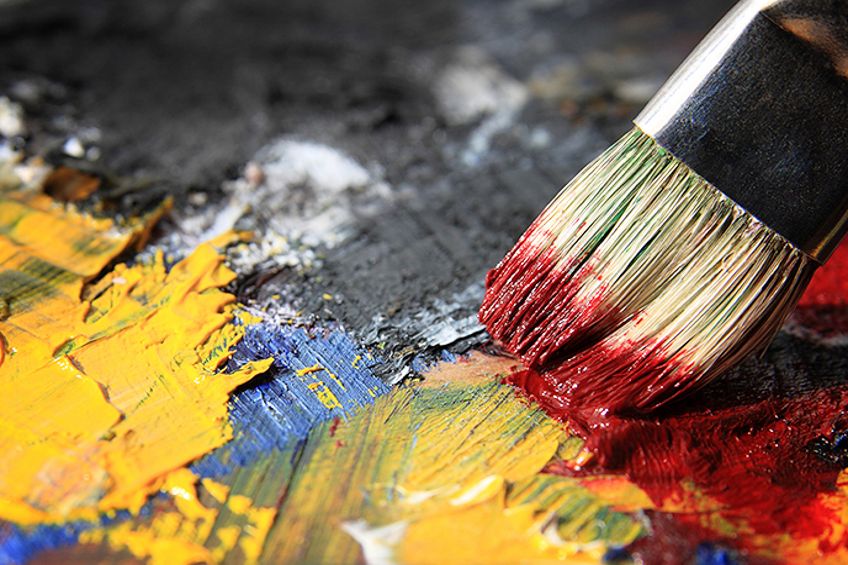
This section covers the various factors directly affecting oil paint drying times.
Your Color Pigments
The length of time oils take to dry may differ across the color spectrum. The composition of certain paint pigments is heavier than others, resulting in longer drying times. If you can apply the paint with a certain degree of consistency without over-saturating the surface, you can expect an approximate drying time of 24 hours.
Earth-tone color shades such as browns, reds, and oranges, and any oil-based paints containing iron oxide will generally dry more rapidly as opposed to others. Selecting brands that are formulated using lead or cobalt will decrease oil paint drying times. Should limited time be a factor in your painting project, you should avoid using heavy black, white, or yellow shades.
Choosing Your Brand
The choice of which brand you select to use will no doubt determine the paint’s quality. Certain brands are aimed at beginners, offering entry-level paint ranges of a lower quality than those that are more specialized. For this reason, it is important to adequately research the various product lines on the market, paying close attention to ratings and reviews, as this will ensure that you are making an informed choice. Customer feedback will provide insight into the overall user experience and compare characteristics with other products available.
These paints are all manufactured using oils, although this depends on the product formula and the process involved. When confronted with endorsements, always check which oil medium each particular brand is using, because this affects your oil paint drying times.

Painting Techniques
A further contributing factor that affects the drying time lies in the techniques and styles you use when painting. Some techniques demand the use of heavy brushstrokes, starkly contrasting color gradients, and deep textures. When implementing a specific technique like fresco or impasto, the result may require up to a week to set completely. The reason behind this is that each layer needs to dry properly in order to allow the next to be applied.
Making use of a brisk technique like alla prima will easily provide an outcome within a single sitting. This “wet-on-wet” style of painting is characterized by continually applying colors without allowing the drying of initial layers.
Environmental Factors
The surrounding work environment is a critical consideration when using an oil-based paint medium. Direct sunlight, humidity, moisture, and dust all affect the environment and the delicate procedure of using oil paints in their own way. Oil-based paint is easily affected by temperature, and as a result, performs more effectively when cold. So, working in cold conditions generally produces improved results compared to hot or humid weather. Artists sometimes use the freezer to store paints when they are not being used. This is due to the low freezing temperature of oil paint, which is 20 degrees Fahrenheit (-28 degrees Celsius).
Rather than producing frozen paint, storing your paints in the freezer at home will help them retain moisture and viscosity when out of use for several consecutive days. This will not solve the problem of storing paints over an extended period, however it is sufficient to prevent wasting any paint that is not in its tube. It allows you to continue working seamlessly the following day, as the oil-paints are stored at a constant and favorable temperature. You can make sure the paint is still usable and avoid any wastage in the process.
When the painting is complete and you have allowed up to seven days drying time, it is still not necessarily dry for framing. The process of using oil-based paint can be a tedious one, because only six months to a year after completion can you begin to seal or frame your work. Prematurely using a fixative or a glass frame could very well damage or smudge your painting. It is optimal either to keep your painting on an easel or even to mount it on the wall while drying oil paint. This will ensure its safety and protection until the application of varnish or framing.
We now understand the reasons behind the long drying period that comes with using oil-based paint. Now, let us explore some ways to improve on the process.
How to Make Oil Paint Dry Faster
By using additional oil-based paint mediums, it is possible to control the drying time by speeding it up or slowing it down. When implemented in combination with your oil-based paints, these products affect the fluidity, color, consistency, and drying time. Artists often opt to utilize an oil medium together with a solvent. Each has its specific functional qualities, allowing ease of use when combined with your oil paints. We will now explore the various types of oil mediums on the market.
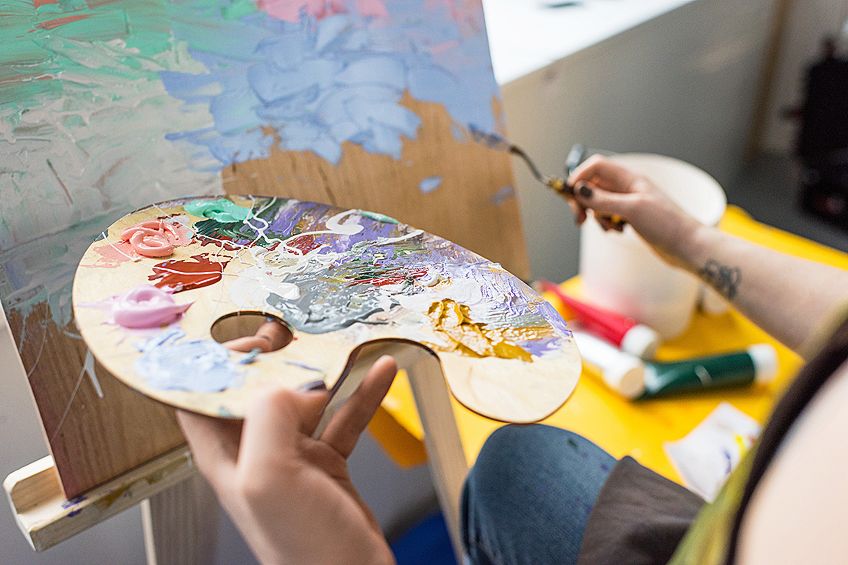
Oil-Based Mediums
When it comes to oil-based mediums, your oil paints are actually produced with some of these very oils, including safflower, poppyseed, linseed, and walnut. These natural mediums carry lower health risks with no toxic odor.
These mediums are effective in techniques that need gloss or heavy strokes and textures. Depending on which oil you use, you can either speed up or hinder the drying period when you add these mediums to your paint.
These mediums excel when used to clean and maintain your brushes. The oils penetrate and condition the brush hairs, ensuring that they are flexible and free of paint.
Solvents and Thinners
Using a solvent or thinner will shorten the drying times as they make the oil paint thinner. Techniques such as underpainting or creating washes are easily achievable using solvents. You can dilute oil-based paint and also wash out color pigments.
When cleaning your brushes, thinners and solvents can actually be extremely helpful. The chemical agents in these are highly effective in stripping the paint from brushes and cleaning any surface spills or paint marks. However, as it will deteriorate and spoil brush hairs, it is not advised to leave brushes soaking for extended periods in these chemicals.
If you are sensitive to toxic smells, you can also make use of an odorless solvent product.
Toxin-Free Solvent Mediums
Free of any toxic chemical agents, these natural products are used as you would any chemical solvent. A citrus-based medium, for instance, contains high levels of citrus oils and water. The extreme acidity that occurs naturally in citrus fruit becomes a useful solvent to clean oil paint from brushes and other surfaces. Spike lavender oil is another natural option, having been in use for centuries. This is an effective medium and has a tranquil scent too.
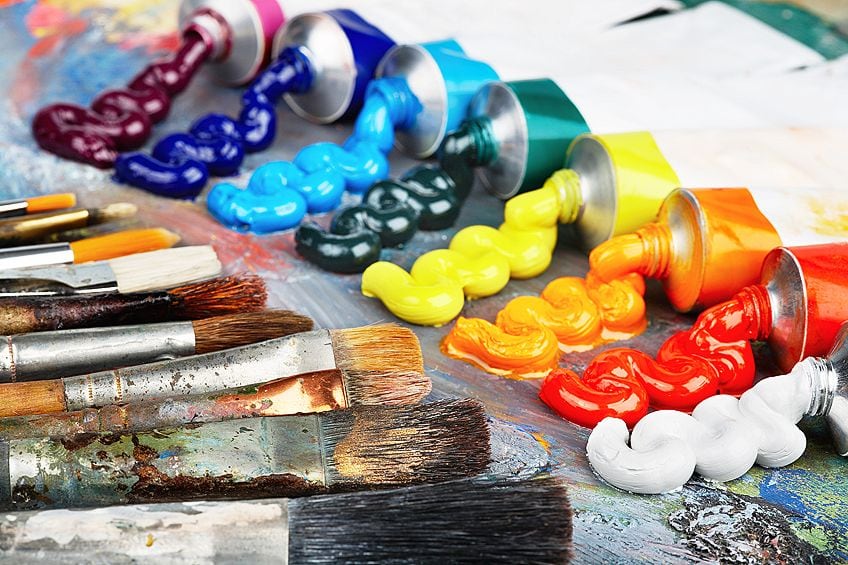
Using Alkyd-Based Mediums
When working with oil paints, Alkyd mediums are widely used for decreasing the drying period. The fast-acting resin they contain helps the paint set and harden in several hours. They add a sheen of gloss to your painting’s finish, and you will not require an oil or solvent when working with these mediums. Generally, there are two types available: Liquin is of a lower viscosity and easier to work with, while the gel variant increases transparency and allows the paint to flow better.
Applying Gesso and Primer Layers
Before painting begins, apply these to your canvas or other chosen substrate. A primer provides a porous surface for the effective adhesion of your oil paint, offering increased coverage and overall longevity of your canvas. Acrylic gesso is an excellent primer for working with oil paints. By using up to three coats and allowing the layers to dry fully between layers, you will have a more effective application and end result.
There is a wide range of oil paint mediums to choose from, each of which has its own characteristics and functional use. We will now look more closely into each of the natural oil types available, as these are generally used more often.
Oil Mediums for Drying Oil Paint
Drying times are an important consideration when working with oil mediums, so the following summary will help you decide which best suits your needs:
- Poppyseed oil takes the longest to dry of any medium. The coating it leaves on your brushes and paints extends the actual painting time, providing a more fluid feel.
- Walnut and safflower oils also dry very slowly and do not improve the drying process. These two oil types are heavy and of a high viscosity, similar to poppyseed oil.
- Alkyd mediums, chemical solvents, and linseed oil are well suited for decreasing the drying time. Using these mediums will thin your paints so as to ensure that they are easy to apply evenly while significantly reducing the time required to dry.
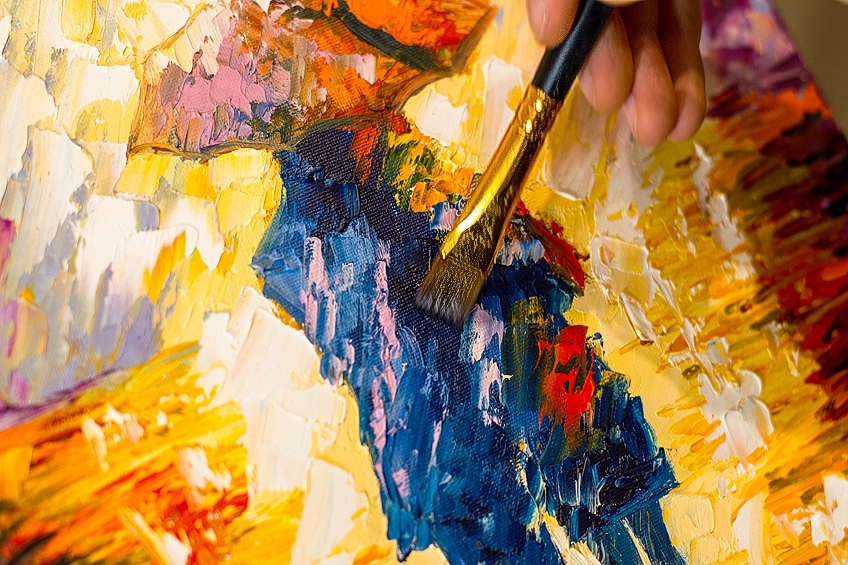
How to Make Oil Paint Dry Faster at Home
Apart from using chemical or oil paint mediums, the following points should help improve the drying times when you work with oil-based paint.
- Allowing your completed painting to dry in an area with decent airflow and natural lighting is a simple drying solution. A fan to increase air circulation or a dehumidifier may also come in handy in the process.
- Oil paint does dry faster in warmer conditions, but be careful to avoid direct sunlight. The ideal temperature to dry your paintings is 70 degrees Fahrenheit (21 degrees Celsius).
- It is most often beneficial to apply a layer of primer or gesso before you begin to paint. This provides the canvas with a porous surface layer, ensuring effective adhesion of the oil paint. Pre-primed canvases are available at most suppliers in different sizes.
- Try using acrylics for your underpainting or base-coat application, rather than using oils initially. With shorter drying times, they will allow you to layer your oil paint and to build color and texture.
- Keep in mind which shades you are working with. Paints containing mineral pigments and earth tones will dry more rapidly.
- Apply the paint in thin layers when you work. Lightly adding each layer delicately can reduce drying time as a result. A heavily laden canvas might appear dry upon the surface, but it will still require long drying periods to set properly. Oils dry gradually from the top down, so the initial layers could remain moist for several weeks or months further.
- When time constraints are an issue, a heat gun can be useful to help with the drying process. Heat implementation is similar to baking and will dry your painting quicker. Use heat guns with care, however, as they can easily damage the painting’s surface, causing cracks and yellowing as a result. It is most effective to hold the heat gun a fair distance from the canvas, and the temperature must not exceed 130 degrees Fahrenheit (54 degrees Celsius).
- Allow at least 6 months after completion before you begin varnishing or framing your work. This way, you can be sure that your painting is completely dry, as varnishing or framing too soon can lead to smudging.
Checking Whether Your Oil Painting is Dry
There is a simple method for checking if your oil painting is dry without causing the painting any harm. Once 18 hours have passed, carefully slide your finger or nail across a small area of the surface of the canvas. Should some powder or fine dust be noticeable upon doing this, it is an indication the layers have dried sufficiently to resume working. Ensure you do this ever so gently in order to cause no damage to your painting.

Take a look at our oil paint drying time webstory here!
Frequently Asked Questions
How Long Does Oil Paint Take to Dry?
Oil-based paints dry far more gradually than other paints like acrylics. This is affected by the paint’s viscosity, the layers applied, and which brand you have used. Usually, a canvas should be allowed at least 24 hours to set properly.
When Can the Canvas Be Framed?
As they consist of multiple heavy paint layers, oil paintings will not dry like other paint products. Oils oxidize and begin curing as a reaction to air and due to this process, they dry from the top layer down and often take far longer to dry effectively. Between 6 to 12 months is the recommended time allowance before beginning to varnish or frame your canvas.
How Do You Speed Up the Drying Time of Oil Paint?
Numerous solutions are available to help you increase or decrease the paint’s drying time while you work, including oils, alkyds, and solvents. Your choice of medium will determine the approach to your painting.
Finally, we are familiar with the factors affecting the drying process of oil paint and how to improve on this. We trust you will find exploring the various mediums and techniques exciting.
In 2005, Charlene completed her Wellness Diplomas in Therapeutic Aromatherapy and Reflexology from the International School of Reflexology and Meridian Therapy. She worked for a company offering corporate wellness programs for a couple of years, before opening up her own therapy practice. It was in 2015 that a friend, who was a digital marketer, asked her to join her company as a content creator, and this is where she found her excitement for writing.
Since joining the content writing world, she has gained a lot of experience over the years writing on a diverse selection of topics, from beauty, health, wellness, travel, and more. Due to various circumstances, she had to close her therapy practice and is now a full-time freelance writer. Being a creative person, she could not pass up the opportunity to contribute to the Art in Context team, where is was in her element, writing about a variety of art and craft topics. Contributing articles for over three years now, her knowledge in this area has grown, and she has gotten to explore her creativity and improve her research and writing skills.
Charlene Lewis has been working for artincontext.org since the relaunch in 2020. She is an experienced writer and mainly focuses on the topics of color theory, painting and drawing.
Learn more about Charlene Lewis and the Art in Context Team.


